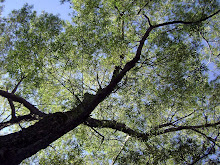This is their story, according to a piece written for The New York Times: "The amount of mud thrown out by the volcano is beyond all calculation, as all the streams reach from the top to the bottom of the mountain, a distance of four of five miles. There was no lava thrown out... Those who survived [in the hamlet of Nagasaki] say that when they ran from their houses at the sound of the explosion they were overtaken by a terrible volume of water which overflowed the banks of the stream, which flows within a hundred yards of the houses of the village and which, augmented, it is supposed, by an immense volume of water from some unknown source, swept down the narrow valley in which the town is situated. Many people were drowned in this volume of water, and a pond was formed right in the village, out of which 30 corpses had been taken up to the time we were there."
In the years that followed the disaster, which killed almost five hundred people, lakes formed where the mud had displaced and changed river courses and beds. Some villages had survived or were able to rebuild; others were destroyed entirely, or flooded by the new lakes. The eruption had deposited minerals into the lakes, most especially into the Goshiki-numa (or Five-Colored Lakes), which gave them different colors. Eventually, the mountain and the lakes became a popular destination for travelers and tourists.
Almost exactly 120 years after the eruption, a small group of Assistant Language Teachers, with one Japanese friend, from the city of Sendai ventured into the shadows of Bandai-san. Worn from their daily toils in helping students try to learn a foreign language and wearied from their daily views of urban Japan, they came to the mountain to refresh their minds and spirits through a three-day immersion in its beauty. Here is their story, according to me:
"The ten of us met at Sendai Station at 8.30 am on Monday, to catch the 9 am bus to Koriyama, just over the border into Fukushima (the prefecture just to the south of ours). From there, we took a local train to Inawashiro, and then another bus to the lakeside opposite our campsite. From subway to bus to train to bus to... motorboat from one side of the lake to the other. All in just under five hours: we arrived at the campsite just after two.
From there, seven of us chose to use the afternoon and early evening to visit the famous Five-Colored Lakes, just a few miles from the camp. They were, indeed, many-colored and incredibly beautiful.
On Tuesday, after a lovely, traditional breakfast provided by the camp, all ten of us set out to conquer the highest peak of Bandai-san, 1819 metres (5968 feet). We followed the ski slope as high as it would take us, mostly because it was the only trail convenient to the camp, then met us with a trail that took us past the Acanuma (Red Swamp). It was a remarkably brief hike, given the height we were covering: we reached the end after about three hours. The trail was pretty intense: bursts of very steep stretches tempered by short patches of relatively flat ground.
It looks like just a small gift and snack shop, like you might find on the top of any mountain popular with tourists. But the incredible thing about it is the couple that runs it: they backpack their supplies up the mountain every day. They told us that they can make it from their home, in one of the villages at the foot, to their shop in about an hour. Everything we bought at the shop had been hand-carried up the mountain by the fittest middle-aged couple in Japan.
Not that they actually let us buy much. As soon as our group of foreigners appeared on top of their mountain, they put the kettle on, literally and figuratively (although, since they have no running water, I have no idea how). We were invited to sit at the tables inside, and plied with little paper cups of hot, sweetened coffee and tea, plates of cookies, and packages of sweetened-bean candies. We had one Japanese speaker among us, who worked double-time to express our gratitude and delight -- but I sure wish I had thought to bring some sort of omiyage with me. Who'd've thought I'd have a need to reciprocate gift-giving at the top of a mountain?
Wednesday was a pretty slow day. Some people took the morning to go boating and fishing; I chose to spend several hours dozing on the wooden chairs overlooking the lake, knocked out by antihistamines and nasal decongestants (third cold in six weeks, yay!). Eventually, I roused myself enough to go exploring for an hour or so with Jill and Louis. We wandered the shores of some of the other lakes near our campsite. The network of lakes in the area is absolutely incredible in size, scope, and range. You could plan an entire vacation around walking around them and between them, and be as awed by their beauty on the last day as you were on the first.
